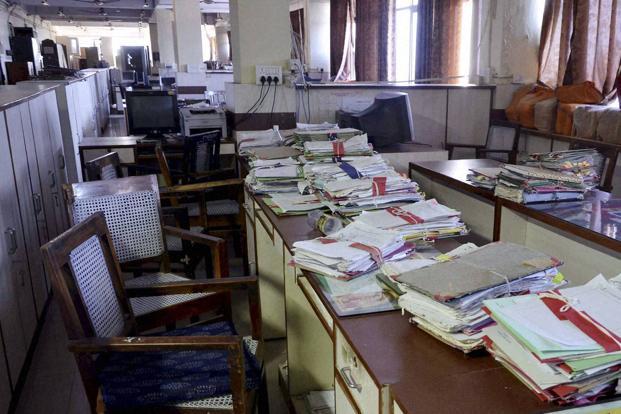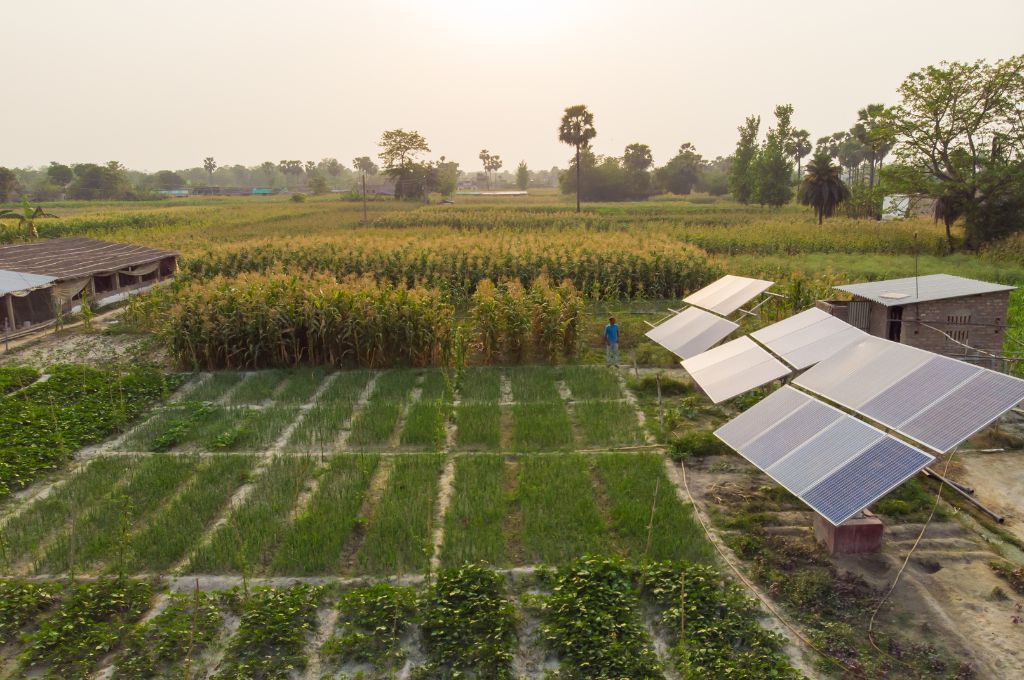On an assignment with a state government, I was struggling to get some official data. I got in touch with a senior bureaucrat, asking if he could help me move things along with his underlings.“Of course they’ll do it! You should’ve come to me sooner. The problem with all of you is this belief in motivation and incentive. This isn’t the private sector—you don’t need to motivate people, just tell them it has to be done!” he said with an all-knowing smile.
An official meeting was called with the erring officers, where I presented a review of what I’d received so far, followed by an excruciatingly detailed list of what I needed. “This must come in by Friday (three days away),” boomed the senior bureaucrat. And we were dismissed.
It was five weeks before I received anything and two months before it was in any usable format.
There can be many reasons why this happened just as there are multiple reasons why some times things work in government, and some times they don’t.
When I say “government” here, what I mean is not some giant behemoth, but the many, many individuals that come together to make it one unit. If you have personally visited a sarkari office to get work done, you’ll know that it is particularly the junior officers working within, and carrying the “steel frame” who make or break the system—and your experience.
It was five weeks before I received anything and two months before it was in any usable format.
These could be the person taking and verifying your documents in a passport office, the lady making your parchi in a government hospital, the district education officer heading a district’s schooling system or the supervisor of an aanganwadi. In fact, if you work with the government, as I often do, you realize how little an individual senior IAS officer sitting in the state or central government headquarters can impact the success or failure of what the government sets out to do in its towns and villages.
Related article: The 3Ps of working with the government
I have worked as an economist and researcher with governments in both India and Africa for over a decade now. My work has taken me to government offices and officers not just in large central and state ministries but also to the district and block offices, to government schools, aanganwadis and hospitals.
Much of it entails understanding what governments do, how they do it and how they can do better. I have interviewed scores of government officers, spent hours in their offices—sometimes just watching events unfold. In 70 years of independence, it’s important to understand also how far we have come as a democratic nation.
With this background—and at the risk of generalizing—here are a few insights into the workings of government: when is it that the government system is likely to work, where it is most likely to stumble, and why.

Photo Courtesy: Live Mint
The straightforward versus the layered
When an officer can do something and check a box off his to-do list, things are likely to move. As a simple example: block and district officers spend a large amount of time just filling forms requesting data. These can be regular data for monitoring purposes, budgets and plan documents, or special requests for new programme design.
I suspect that paperwork in government is so popular not just because it’s necessary but because it’s easy, straightforward and requires little or no creativity.
A more complex example is found in the education sector. While states have found it easier to meet their school construction and primary enrolment targets under the Sarva Shiksha Abhiyan (SSA), nearly everyone is now stuck at trying to make children learn. Similarly, it is far easier to build a district health centre than provide real healthcare; provide basic meals in aanganwadis using a functional Public Distribution System (PDS) than develop them into centres of early childhood education and development; and build toilets than get people to actually use them.
To use the jargon, and at the risk of over-simplifying, the translation of inputs to outputs is easier, but to outcomes is far more complicated.
Of course, this isn’t always true. A look at the Rashtriya Madhyamik Shiksha Abhiyan (RMSA), the secondary school equivalent of the SSA, reveals that the government has found it far more complicated to build and run secondary schools and hire secondary school teachers than it did for primary education. New Delhi-based research group Accountability Initiative’s review (2015) of the scheme reveals that low expenditure has been a significant problem for the RMSA since its inception—vast pools of funds lie unspent with state governments.
Launched in 2009, the RMSA was envisaged to solve the problems of secondary schooling in India just like the SSA was seen to have done for its primary counterpart.
When an officer can do something and check a box off his to-do list, things are likely to move.
But did we forget that it is far easier to hire a primary school teacher in a village in Ballia than to get one trained to teach science to Class XII students? Or that it is far easier to get a parent-teacher association to agree on how and where to spend annual grants of Rs 5,000 (under SSA) than Rs 50,000 (under RMSA)? Or even that constructing a small, two-room school building would be far less contentious (and involve fewer competing interests) than building a mammoth four-floor structure for a secondary school on prime land? I would attribute this one to poor programme design.
Accountability structures
If a district hospital superintendent is responsible for ensuring that doctors show up on time and do their job, but has little or no control over the payment (or withholding) of their salaries, it should surprise nobody if he or she fails at the job.
Similarly, if a district education officer (DEO) must monitor school construction, but a separate body approves the payments to contractors, no contractor will take the DEO’s monitoring visit seriously and the officer will just stop showing up after the first few times. These are true stories from states I’ve worked in, but examples of misplaced and mixed-up accountability structures are plentiful in government.
That capacity is low, corruption is high, salaries are poor and work conditions are miserable.
These are found abundantly in financial matters of the government too, where—to take the example of centrally sponsored schemes—fund transfers from the central government to states can take so many different routes, involving so many independent and autonomous agencies that at any given point even those within the government are unaware where money gets stuck, how much has been received and for what purpose.
Related article: What trips street-level bureaucracy?
You’ll frequently hear from government school principals that they have received money in the school bank account but can’t spend it because they don’t know what it’s for. “Even people at the district office are not sure, madam,” I was often told. These could be funds for textbooks or uniforms or toilet repairs—and remain unspent.
Add to this the fact that nobody that these school principals, block education officers or even district education officers report to is really interested, on any immediate basis, in what’s happening to these funds. It is only when and if a much-delayed, large-scale evaluation is carried out or an individual complaint is raised and followed up that the needle on this moves at all.
Usually, the earliest anyone even talks about this money is when the next financial year’s budget is being put together and previous allocations need to be accounted for before new ones can be sought.
The relevance (or lack thereof) of monitoring reports
An anecdote from a senior health sector officer:
The health department of a large state once called for a meeting of all its district chief medical officers (CMOs) to review their progress, identify the gaps and in general do what good programme management must do.
The CMO in question realized only too late that all district level data and its analysis had to be submitted to the state office on a CD—and he hadn’t put this together. “I promptly sent my junior to a computer shop to buy a CD. We unwrapped it, labelled it with our district name and submitted it.”
It had been three years since the submission of that shiny, blank CD and the officer in question has never heard about it again.
The damage to work ethic and motivation
Lower and mid-level bureaucrats are critical resources in the implementation of government schemes and can make or break the state’s ability to deliver on its promises. However, my interactions with them have revealed that most of them view themselves as little more than errand boys for their superiors.
They say that they “have no idea today of what they will do the next day”. Sudden meetings or orders keep coming in, and the overall work priorities of the district change with new collectors. When this happens, they too change course and chase new targets. The day’s work is often done on the basis of a “daily agenda”, set usually by calls received from superiors in the morning.
Ideas of bottom-up planning and plan-based implementation are nearly laughable in such a scenario. This is not to say that districts don’t make plans—they do and do so diligently, on time and in-format—but only because they must.
It is a simple, task-specific exercise that they will be directly held accountable for and it is therefore neither necessary nor possible to pass this buck. But talk to grass-roots implementers and many will tell you how disconnected any of these plans are from what they do on a daily basis.
The average district or block officer often doesn’t even know why is it that he or she is doing what they are.
When they are not running errands, mid-level government functionaries also operate as “firefighters”—resolving complaints from the public and department staff (school admissions, teacher salary delays, transfer requests, etc.) or sending responses to queries raised by a senior officer. There is little or no room in a packed day for the regular, boring government work of focused implementation of schemes and programmes.
In such a scenario, expecting an implementing officer to place any emphasis on actual outcomes—such as improved learning in classrooms or health service quality in hospitals—is just plain wishful thinking.
Implementing officers often lose track of what their real task is and begin to treat the daily paperwork or firefighting as that. This shouldn’t be surprising because what they’re ever asked for or pulled up for or held accountable for, is usually just this paperwork.
The average district or block officer often doesn’t even know why is it that he or she is doing what they are, or what the context within which this task needs to be done is; they are only following orders. When you act in this vein—confused, with urgency and oblivious to the big picture—you are likely to do only the bare minimum that would check the box and get the albatross off your neck.
Implementation systems thwart individual initiative
Things don’t get done because they don’t have to—the bare minimum for a government officer to retain his or her job has nothing to do with their actual job (or what you and I perceive to be their actual job). Nobody needs to do beyond the bare minimum because as they often say, the gadha (donkey) and the ghora (horse) are barabar (equal) in government.
For me, as an outsider looking in, the view is both frustrating and fascinating. While there has been much to learn, the most important lesson has been that even at their most inefficient, governments are valuable, and irreplaceable.
It is far sexier to talk of increasing government funding to programmes, but these boring details are where the roadblocks lie.
Only the state has the mandate, capability and resources to operate on the scale it needs to and only the state will sustain non-profitable but critical ventures for as long as it does. While there may be private enterprises that see fortune at the bottom of the pyramid, there remains a lower bottom (or rock bottom if you will) that remains invisible to even the most imaginative and daring entrepreneur.
Market-driven solutions emerge, but we are a long way away from a time that these can be expected to operate at any scale and on a permanent “not-going-anywhere” basis. This is where the government steps in, and stays. Even that one teacher in a primary village school in Jagdalpur is a teacher more than what would be if the government were to stop running schools.
This isn’t a new learning. Donors, development partners and researchers have all long acknowledged that working with governments is the only way to create any meaningful change or lasting impact.
Most government officers you will meet are working hard, keep punishingly long hours and operate in highly stressful work conditions—it just isn’t work that is taking us too far. The oft-repeated cliché of corruption as obstructing government functioning also explains little; if you look closely, it becomes obvious that almost everyone in the system stands to gain more if a hospital does get built or the teachers do get hired.
That capacity is low, corruption is high, salaries are poor and work conditions are miserable are all true impediments to government functioning. But most importantly, there is something broken at the core of this functioning and it is critical to fix it.
It is far sexier to talk of increasing government funding to programmes, but these boring details are where the roadblocks lie. We pump in more money but then it goes through the same leaky pipes—and then we wonder why we get more of the same.
Disclaimer: Amee Misra sits on the board of India Development Review.
This article was originally published on Live Mint. You can find the original piece here.




